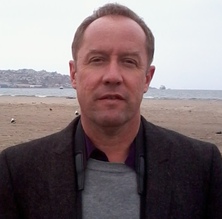
The Chief Scientist, The Nature Conservancy
Occasional Professor of Mathematics and Professor of Ecology, The University of Queensland
Honorary Doctorate, University of British Columbia; Emeritus Professor, University of Adelaide
On November 14th 2016 Hugh became The Chief Scientist of The Nature Conservancy http://www.nature.org/, the world’s largest environmental non-government organization. He is based in Arlington Virginia (USA) and Brisbane (Australia).
His expertise is in ecology, applied mathematics, spatial planning, operations research and economic instruments for conservation outcomes. He has coauthored 650+ refereed publications covered by the Web of Science (30+ in the world’s top journals: Science, Nature or PNAS). He has supervised (or is supervising) 80 PhD students and 50 postdoctoral fellows. In 2016, Hugh was elected a Foreign Associate of the US National Academy of Sciences, the most prestigious science academy in the world. He is one of less than 500 foreign associates in the NAS globally.
As the Chief Scientist of The Nature Conservancy Hugh guides and promotes the work of our 500+ scientists working in 72 countries and every state of the US. He chairs the SNAPP (Science for Nature and People Partnership) board and represents The Nature Conservancy on the Natural Capital Partnership lead by Stanford University. “Global Science” reports to Hugh – a collection of 30+ people working to assist all aspects of science across the conservancy with the purpose of ensuring that The Nature Conservancy is a science-based organization. Hugh works with, and is guided by, a Scientific Advisory Council and the Cabinet of Lead Scientists (ten of TNC’s best scientists).
Hugh has sat on innumerable boards and expert advisory committees over the past 30 years. He was the inaugural chair of the Australian federal government Biological Diversity Advisory Committee. He is a founding member of the Wentworth Group that lead Australia’s water reforms. With Dr Martine Maron and others he developed a credible but expedient biodiversity offset calculator that is having global impact. The idea of using basic cost-effective decision-making, developed with Dr Liana Joseph and Dr Richard Maloney, is changing how we allocate money to threatened species and conservation actions around the world including the USA.
The Possingham lab uses mathematics to formulate and solve problems for saving plants, animals and ecosystems. They developed the most widely used conservation planning software in the world. Marxan www.ecology.uq.edu.au/marxan.htm was used to underpin the rezoning of the Great Barrier Reef and is currently used in over 150 countries by over 6000 users – from the UK and USA to Malaysia and Brazil – to build the world’s marine and terrestrial landscape plans. Marxan can be used to achieve conservation outcomes while maximizing development opportunities. In addition, many governments and ENGOs use the group’s research for the allocation of funding to threatened species recovery and solving other conservation conundrums. Marxan has assisted the conservation rezoning of about 10% of the planet and is one of TNC’s main spatial planning tools.
Hugh and Dr Barry Traill wrote “The Brigalow Declaration”, used by Premier Beattie to more than halve land clearing in Queensland thereby reducing greenhouse gas emissions in Australia by more than 5% per annum and saving one million acres per year from conversion which amounts to saving 20 million birds, mammals, reptiles and amphibians per year.
He has one psychological disorder, a compulsive desire to watch birds.
Google Scholar profile: https://scholar.google.com.au/citations?user=lSYOB3cAAAAJ&hl=en.
Read a Q&A with Hugh.Q&A with Hugh Possingham